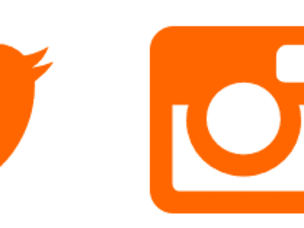Future-proof against the cost-of-living crisis with partner marketing
Written by Mai Bonham-Carter on 8 minute read
With the cost-of-living set to rise, and consumer confidence on shaky ground, partner marketing offers brands new ways to save on costs and reach new customers.

In the light of a post-pandemic society with fewer COVID-19 restrictions, a national crisis has emerged in the form of rising inflation. All UK sectors will undoubtedly feel the impact of the increased cost-of-living, whether the knock-on challenges are experienced by businesses through increasing product costs, lower stock availability, reduced customer spend and purchasing freedom, or halted sustainability projects. With a continued decrease in consumer confidence focused around the rising cost of living, an unavoidable shift in consumer buying power is coming and we need to prepare ourselves for it.
In 2022, brands will need to get more creative than ever with their marketing strategies. Whilst it may be tempting during a period of dwindling consumer confidence to focus on a competitive discounting strategy, this could in-fact mean directly absorbing any price inflation costs. Instead, by adopting a mixed approach of combining attractive, considered product pricing with an increased focus on brand values and quality, advertisers will have a better chance of ensuring marketing spend remains profitable. No longer does a ‘one-size fits all’ approach sustain programme growth when it comes to affiliate partnerships either, here are our recommendations for futureproofing affiliate channel success during a surreal time of consumer uncertainty.
- Research first, buy later
On 1st April, National Insurance tax increased in the UK, resulting in tightening purse strings and many workers anticipating less ‘disposable income’ from each payslip. This decrease in remaining spend, after taxes and utility costs are paid, will mean that, for many UK consumers, the decision-making process for purchases outside of necessity will become much more complex. Many customers will now dedicate time to research before buying to ascertain that a product or service is both deserved and worth the cost to them personally.
Engaging consumers within the research phase should be a key focus for affiliate marketers. Brands should consider fostering partnerships with influencers and content creators, to simultaneously educate and interact with prospective customers. Awin expects to see a surge in the micro and nano influencer space this year as transparency, relatability and product detail become crucial components of the purchasing funnel. What we may see with higher ticket items, such as holidays and luxury household or personal items, is a move away from sporadic flash discounting, and advertisers instead focusing on a steadier approach of highlighting USPs, telling their brand story and clearly communicating their core offering to strategically selected audiences.
Awin has seen a notable increase in the number of advertisers incorporating influencers into their affiliate strategy over the last 12 months. The rise in social media platforms such as TikTok, 2021’s most downloaded app with 656 million downloads, is enabling further opportunities for brands to work with content creators. Awin has integrated with Sellers Alley, an official marketing partner of TikTok, to give brands visibility of campaign performance and to generate new revenue streams. Brands are continuing to push video content due to favourable social media algorithms and plethora of Instagram Reels and YouTube Shorts going viral. The growing demand and use of influencer-created content demonstrates how consumer behaviour is evolving into an experience-based entity, with people desiring an honest account or review of a product/service via someone they relate to.
Influencer partnerships are versatile and can generate sales for smaller luxury items too. Often referred to as "the lipstick effect", many consumers impacted by inflation will still desire the feeling of treating themselves on smaller luxuries that make them feel good. Health and Beauty retailers can optimise this with influencer content such as "how-to" guides and "before and after" content to encourage consumer buying motivation. Building long-term partnerships with influencers, enables advertisers to offset against the pressures of impersonalised price crunches and tap into a buying audience of highly targeted consumers ready to commit to that mood-boosting smaller luxury purchase on payday.
- Sustainability please
Interestingly, a buying consideration that may be less affected by inflation is products or services associated with sustainability. Following COP26 last year, there is a heightened awareness of ethical consumerism and a conscious drive from brands and marketers to help tackle climate change via production and logistical improvements. M&S recently announced a plan to encourage customers to return unwanted clothes in exchange for loyalty points on the Sparks Rewards program. This idea was based on customer feedback stating that 65% of customers plan on revamping their wardrobes in 2022. These initiatives demonstrate the proactive actions brands such as M&S are taking to incorporate and promote sustainable and ethical strategies whilst increasing customer loyalty via rewards benefits.
The Travel sector is not historically associated with sustainability, however, corresponding with the rise in ethical consumerism, 59% of travellers are prepared to pay more to ensure their holiday is more sustainable. Awin data supports this trend, tracking a steady increase in the average order value (AOV) across travel transactions this year. In addition, as a result of the imposed hiatus in travel due to the pandemic, more of us are booking holidays despite travel often being a considered and high-ticket purchase.
Despite this initial spend, we anticipate a change in the way that people choose to travel over the next 12-18 months. Trends that could characterise this sector may include consumers taking fewer short-haul flights per year, instead favouring a single, longer trip abroad that potentially incorporates spending time online, due to the increased prevalence of flexible and remote-working policies amongst employers post-pandemic.
Shifts in consumer behaviour should be monitored by advertisers in the Travel sector, particularly when considering which locations or travel methods to promote. The amalgamation of traditional ‘wish you were here’ and ethically conscious messaging has proven successful for G Adventures to reach potential customers. G Adventures works with travel blogs and influencers via affiliates to highlight the power of travel to do good through community tourism and wealth distribution. Their industry-first Ripple Score system measures the money spent locally by G Adventures on holiday services such as accommodation, restaurants and transportation and is published online on each trip page. The higher the score, the more money spent within the local community. Socially responsible USPs such as this will continue to drive consumer engagement within the Travel sector as people move towards a pro-sustainable way of living.
- Give a discount, where discount is due
The rise in cost-of-living may impact the prevalence of discount codes within affiliate strategy beyond 2022. Engaging with discount code publishers will be crucial for advertisers, as consumers are forced to become more saving conscious. Brands will need to carefully balance volume and value as part of their discounting strategy to combat the impact of price increases for their business too. One sector to consider is that of supermarket giants, where we expect to see brand loyalty decrease for everyday items such as milk and bread with price point taking precedence. Retaining customer engagement is set to become more competitive, with these brands focusing heavily on engagement with their customers and enhancing loyalty schemes.
The affiliate channel empowers brands to extract performance data and personalise promotions. Awin conversion analytics can be utilised to provide enhanced data insights. By passing through additional information via custom tracking parameters, advertisers can report on the metrics that are most important to them and gain deeper insights into their affiliate activity and audience purchasing categories. Whilst an always-on discount code may have worked well with publishers previously, adopting a data-driven approach will allow advertisers to offer bespoke discounts based on an understanding of the target audience, guaranteeing stronger conversions. The use of customer data to form a rationale for promotional choices and the potential to partner with discount code and cashback partners will be crucial to optimise revenue and sales.
A rising affiliate type in this space is Buy Now Pay Later (BNPL) publishers. BNPL companies such as Klarna have seen exponential growth within the affiliate channel throughout 2021 and with further investment focusing on personalisation, budget management and achieving an overall seamless in-app shopping experience, we expect to see a large growth in sales volumes. The emotional psychology around paying a smaller amount "in the moment" leaves customers feeling they have received a good deal. Working with BNPL providers via the affiliate channel allows advertisers to more offer variation and access an audience who often already have the motivation to purchase something they have their eye on.
After two years of unprecedented yet consistent e-commerce growth due to the global pandemic, we now head into a period of inflation-based consumer uncertainty. Regardless of sector, affiliate marketing is perfectly placed to support advertisers looking specifically to offset the negative impact of inflation. By making use of a rich, diverse affiliate landscape, technology-rooted innovations and data analysis, brands can be confident that their affiliate channel strategy can withstand the crisis and become more robust in the long-term as a result.
For more information on industry trends and market insights, contact the client partnerships team or sign up to The Pulse newsletter.




